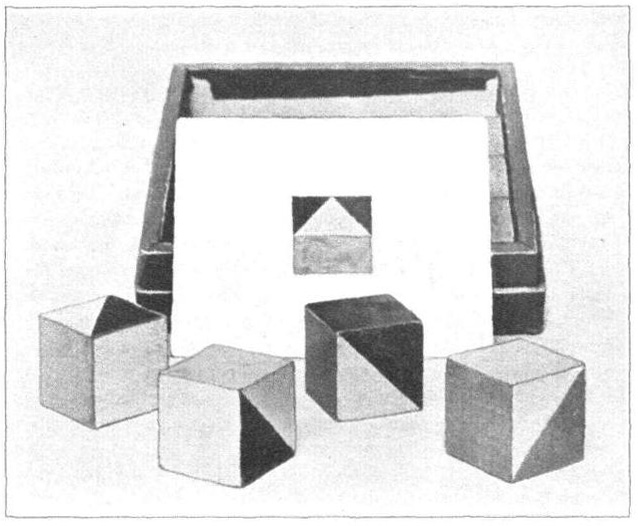Kohs Block on:
[Wikipedia]
[Google]
[Amazon]
 The Kohs Block test, also known as the Kohs Block Design Test, is a performance test designed to be an IQ test. The test taker must, using 16 colored
The Kohs Block test, also known as the Kohs Block Design Test, is a performance test designed to be an IQ test. The test taker must, using 16 colored
 The Kohs Block test, also known as the Kohs Block Design Test, is a performance test designed to be an IQ test. The test taker must, using 16 colored
The Kohs Block test, also known as the Kohs Block Design Test, is a performance test designed to be an IQ test. The test taker must, using 16 colored cube
In geometry, a cube is a three-dimensional solid object bounded by six square faces, facets or sides, with three meeting at each vertex. Viewed from a corner it is a hexagon and its net is usually depicted as a cross.
The cube is the only r ...
s, replicate the patterns displayed on a series of test cards. The design of the test was motivated by a belief that the test could easily be administered to persons with language
Language is a structured system of communication. The structure of a language is its grammar and the free components are its vocabulary. Languages are the primary means by which humans communicate, and may be conveyed through a variety of met ...
or hearing
Hearing, or auditory perception, is the ability to perceive sounds
In physics, sound is a vibration that propagates as an acoustic wave, through a transmission medium such as a gas, liquid or solid.
In human physiology and psycholog ...
disabilities.
History
The test was developed in 1920 by psychologist Samuel C. Kohs (1890–1984), a student ofLewis Terman
Lewis Madison Terman (January 15, 1877 – December 21, 1956) was an American psychologist and author. He was noted as a pioneer in educational psychology in the early 20th century at the Stanford Graduate School of Education. He is best known f ...
, building on earlier and similar designs (such as Francis N. Maxfield's Color Cube Test).
Kohs described the 1920s version of the test as a series of 17 cards which increase in complexity as the test progressed. Test takers replicated the designs with painted blocks (each side was a single color or two colors divided by a diagonal line). The initial scores were based on completion time and number of moves. Hutt amended the scoring method to only score completion time. The test was given to both children and adults.
As early as the 1930s, the Kohs Block Test was administered at the Ohio School for the Deaf
Ohio () is a state in the Midwestern region of the United States. Of the fifty U.S. states, it is the 34th-largest by area, and with a population of nearly 11.8 million, is the seventh-most populous and tenth-most densely populated. The sta ...
, and at other schools with special needs students.
The Kohs Block Design Test has been adapted into sections in several current IQ tests. The Kohs Test continues to be used in research extensively to measure executive functioning and learning, consistent with the original design of the test. This has made the Kohs Block Test useful for assessing the effects of aging, drug use, and in brain research, among other areas. In particular, that the Kohs is a relatively non-verbal test lends it to be used effectively in assessment of those with language issues and in multicultural research settings to reduce the impact of language on assessment of functioning.
Patients with damage to the right hemisphere of the brain find successful completion of the task to be extremely difficult, so the test is often used to diagnose right hemisphere damage.
See also
*Block design test
A block design test is a subtest on many IQ test batteries used as part of assessment of human intelligence. It is thought to tap spatial visualization ability and motor skill. The test-taker uses hand movements to rearrange blocks that have vario ...
References
Further reading
* * * * * * *External links
{{Authority control Intelligence tests